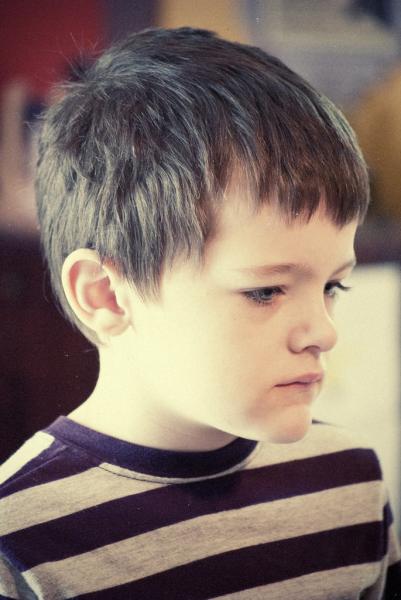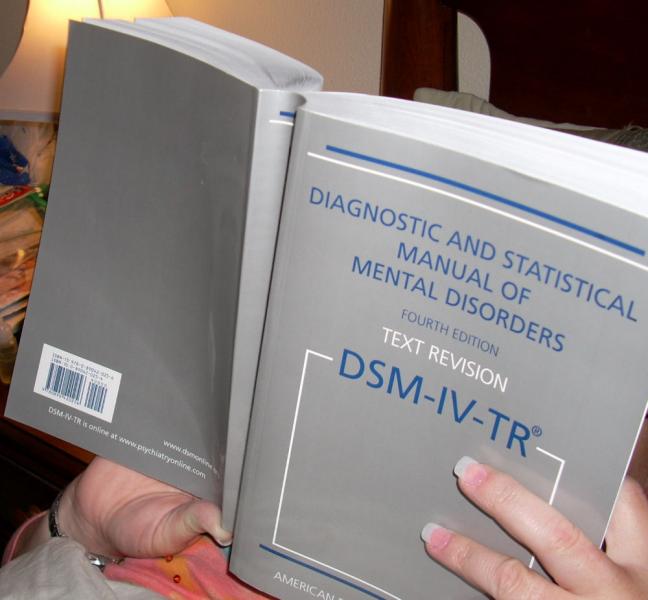Autism Diagnosis: About That DSM 5 Story

 The Diagnostic and Statistical Manual (DSM) is sometimes called the Bible of modern psychiatry. First published in 1952 as DSM I, the reference book lays out the diagnostic criteria for most psychiatric conditions and illnesses.
The Diagnostic and Statistical Manual (DSM) is sometimes called the Bible of modern psychiatry. First published in 1952 as DSM I, the reference book lays out the diagnostic criteria for most psychiatric conditions and illnesses.
The current DSM IV was published in 1994, then revised in 2000. And now it's due for a rewrite. The DSM 5 (they dropped the Roman numerology) is expected to be released in May, 2013.
Now this may not be as big news as, say, a Duran Duran reunion tour, or Kate Middleton's anticipated baby bulge, but it's still creating a buzz among those who advocate for persons with autism. That's no small constituency – 800,000 or more children and young adults have autism spectrum diagnoses. When you add up all the parents, grandparents, aunts and uncles, you get a lot of confused and anxious people.
The buzz kicked off last week with some news out of Iceland - an unpublished study looked at how proposed changes to the way autism is diagnosed might affect rates of diagnosis, and possibly treatment and services. The prognosis could be grim, according to the New York Times:
Proposed changes in the definition of autism would sharply reduce the skyrocketing rate at which the disorder is diagnosed and might make it harder for many people who would no longer meet the criteria to get health, educational and social services, a new analysis suggests.
The autism advocacy movement is a diverse crowd, and the report predictably set off howls of protest from some quarters. "The American Psychiatric Association did something very similar to this back in 1973 when they voted at their annual convention to remove homosexuality from the DSM," was a comment left on one website.
And yet we still have gay people.
The silliness is endemic. An anti-vaccine guest columnist who slipped by the gatekeepers at The Health Care Blog linked her cause to the proposed changes. "So why exactly is the APA changing what we call autism? How is this going to benefit children?" wrote the "media editor" for Age of Autism, a fringe anti-vaccine website associated with Jenny McCarthy's Generation Rescue. "In the last 20 years, we've seen a 600 percent increase in a serious neurological disorder. No one at the APA is able to tell us what causes autism, how to cure it, or how to prevent it, but they seem happy to again play with the definition. We need to ask why this is happening."
The autism news beat is a target-rich environment for any reporter willing to wade into the esoterica of psychiatry, epidemiology, and special education law. That's one reason most autism coverage falls flat. At a time with when your typical Action News health reporter is underpaid and overworked, it's not surprising that most autism coverage suffers from news attention deficit disorder. Autism reporting, much like autism itself, falls along a spectrum, from interesting and informative on one end to shallow and meaningless on the other.
So how to cover autism, or, more specifically, the impending rollout of how autism is diagnosed in DSM 5? Here are some tips:
1. Don't assume that autism is an epidemic. The anti-vaccine movement pushes the epidemic myth in order to drum up support. But there is no evidence for an epidemic, and the increase in diagnoses over the last 50 years can be largely explained in ways that don't presume a global conspiracy to poison children. Fact: the word "autism" was first mentioned in the DSM III in 1980, and the concept of a spectrum first appeared in 1987, in the revised manual (DSM III – R). "The high rates of prevalence and diagnoses today are instead evidence that scientists are finally counting cases correctly," says Dr. Richard Grinker, author of Unstrange Minds (Basic Books, 2007). "This is a good thing, not only for the US but for the world, including cultures that have only just begun to learn about autism." Grinker's website is a great place to learn how the definition of autism has changed over the last six decades.
2. Be skeptical of any study, especially ones that are unpublished. The New York Times article was largely based on an unpublished study by Dr. Fred R. Volkmar, director of the Child Study Center at the Yale School of Medicine . Volkmar once sat on the American Psychiatric Association (APA) panel that is writing DSM 5. He resigned, and may have an axe to grind with the APA.
3. Beware of personal agendas. Dr. David Kupfer, chair of the DSM 5 committee, has publicly expressed concern about the "cost" of so many people (children) qualifying for mandated services.
4. Federal special education law, specifically the Individuals with Disabilities Education Act (IDEA), doesn't rely solely on the DSM. "That (autism) diagnosis may have some bearing, but it's not the sole determining factor," says Sonja Trainor, a senior staff attorney at the National School Boards Association. A diagnosis is not the same as a determination about whether a student needs special education.
5. The new criteria emphasize deficits in social interaction and restricted, repetitive patterns of behavior, interests, or activities, with less emphasis on communication criteria. But even if a child slips through the DSM 5 text, he/she could still qualify for services under a different diagnosis, such as communication disorder. Again, what matters is not the label, but whether a child's disabilities are severe enough to warrant special education.
6. The IDEA act was written for children. For adults with autism, services do depend on diagnosis, and that varies by state. Adults with autism are an under-reported story. Those who push the autism epidemic angle prefer to keep it that way.
 Choose your sources carefully. It helps to develop trusted sources who are familiar with those who are competing to have their voices heard. Case in point: the unpublished study that triggered two New York Times stories is based on the same dataset which was exploited by anti-vaccine publicist David Kirby, who used the numbers to claim that "one-third of autistics recover!" This was supposedly evidence that the shadowy autism cure industry was on to something.
Choose your sources carefully. It helps to develop trusted sources who are familiar with those who are competing to have their voices heard. Case in point: the unpublished study that triggered two New York Times stories is based on the same dataset which was exploited by anti-vaccine publicist David Kirby, who used the numbers to claim that "one-third of autistics recover!" This was supposedly evidence that the shadowy autism cure industry was on to something.
But the devil is always in the details. The children involved in that dataset didn't have confirmed diagnoses. Their parents merely answered questions like "Has any medical person ever told you your child has an ASD?" and "Does your kid have an ASD now?" So the impressions of a school nurse, coupled with a parent's incomplete understanding of a very complicated disorder, could easily lead to a wrong diagnosis. And when the diagnosis is corrected, years later, some will call it a "recovery", or even a "cure."
If I had to guess, I'd say the Volkmar study will stay unpublished. It's just too bad we can't say the same thing about fearmongering news accounts.
Ken Reibel blogs about autism and the newsmedia at AutismNewsBeat.com.
Related Content:
Changing the Definition of Autism: A National Debate Heats Up
Covering Vaccines: Science, policy and politics in the minefield
Photo credits: upper left and home page, Lance Nielson via Flickr; lower left, Richard Masoner via Flickr

